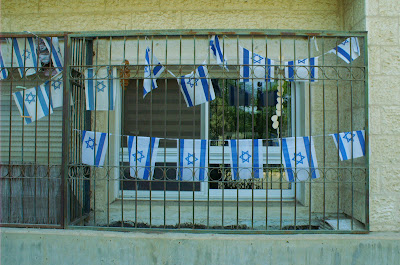The day was engineered to present us with the Other side of Jerusalem, the Palestinian side which has been lost in the war. The old neighbourhoods now inhabited by Israelis now located in West Jerusalem. Reflecting back i think we were taken to see the typologies of old Palestinian housing but also we were there to what was lost. To see the contrast between east and west of mainly Palestinian typology. As such the contrast of quality of places is even stronger.
A brief introduction by a Palestinian planner Osnat Post, who used to work for Jerusalem Municipality has been a sad introduction into the vision of the whole city. Knitted with hundreds of new roads to being for pedestrian use, with Calatrava bridge of in my opinion no real importance or design qualities which are made for this city. An attempt to make Jerusalem Modern is almost impossible! Forgetting all the developer style plans for the city one things was clear at the end of presentation. Nothing has been planned for Eat Jerusalem!


Baqa
A Jewish architect whose name i cannot remember has been king enough to present us with his research on this neighbourhood. Carefully speaking of the history of the area he remembered to say how Jewish pollution lived here among Muslims and Christians. His work was important. Good Quality historic hosing from the turn of 20th century demonstrated typologies that since than i recognise all over Jerusalem.
Ein Karem
Oh this place was beautifully, Similarly to Baqa in it architecture yet it's setting at the turn of a valley looking down onto greenery and up towards mosque , church and synagogue made it so much more astonishing. All three religions lived there peacefully for a long time. Now only Israelis live here surrounded by this beauty. Pitty it has to be this way.


Lifta
Old Palestinian village emptied post 1967 war. Again a beautiful place. This village most of all the examples of the day allowed us to understand the way Palestinians lived on these lands centuries ago. Little streets connecting houses which grew from the hill in locations which the hill itself allowed. There is no distinction between nature and architecture in this typology.
How relevant is it all to the project?







No comments:
Post a Comment